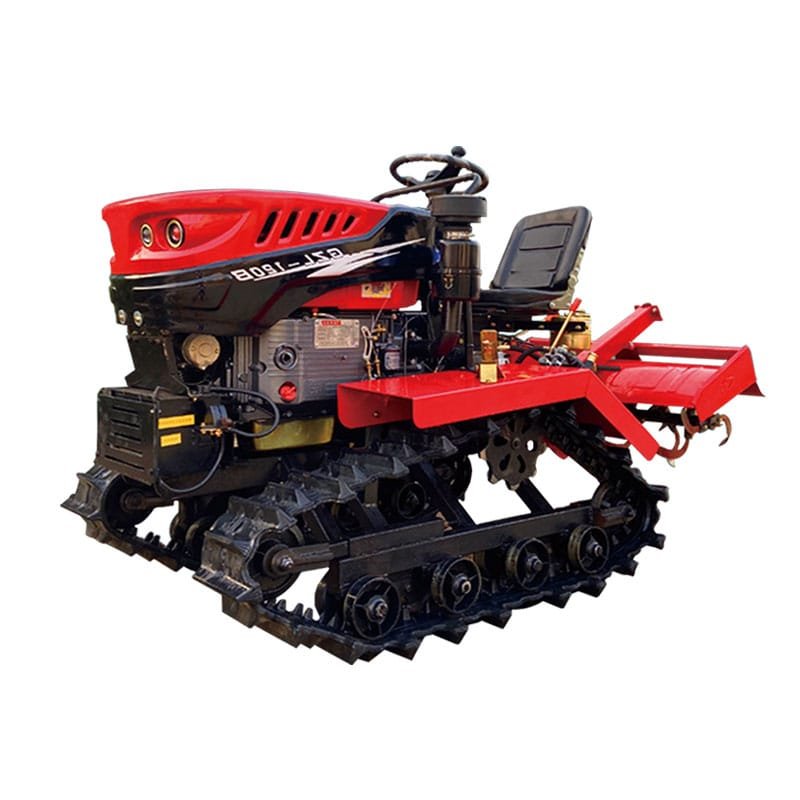Crawler tillers, also known as tracked tillers, are specialized agricultural machines designed to prepare soil for planting. These machines are equipped with tracks instead of wheels, providing several unique advantages that make them highly effective in various farming operations. Here are the key benefits of using a crawler tiller:
Superior Traction and Stability
One of the most significant advantages of crawler tillers is their superior traction and stability. The tracks distribute the machine’s weight over a larger area, which reduces soil compaction and provides better traction on soft or uneven ground. This is particularly beneficial in fields with varying soil conditions, ensuring that the tiller can operate efficiently without getting stuck or causing damage to the soil structure.

High Traction Efficiency: Crawler Tiller
Crawler tiller has a larger grounding area, higher adhesion, and greater traction at the same horsepower compared to wheeled tiller. This means that they can handle heavier loads and perform tasks that would be challenging for wheeled tillers. The increased traction efficiency allows for more effective soil preparation, which is crucial for successful crop cultivation.
Reduced Soil Compaction
The design of crawler tillers minimizes soil compaction, which is essential for maintaining soil health and productivity. By distributing the tiller’s weight over a larger area, the tracks reduce the pressure exerted on the soil, allowing for better root growth and water infiltration. This is particularly important in sustainable farming practices that aim to preserve soil quality.
Improved Maneuverability
Despite their size, crawler tiller is surprisingly maneuverable. The tracks allow for tight turns and precise control, making them ideal for working in confined spaces or on small plots of land. This is especially useful in orchards, vineyards, and other areas where space is limited and precision is required.
Enhanced Slope Stability
Tracked tillers have a low center of gravity and a significant adhesion coefficient, which provides excellent stability on slopes. This makes them safer to operate on hilly or uneven terrain, reducing the risk of overturning or sliding. This stability is crucial for tasks such as hillside farming and land leveling.
Cost-Effectiveness
Investing in a crawler tiller can be cost-effective in the long run. While the initial purchase price may be higher than that of a wheeled tiller, the reduced need for multiple specialized machines and the lower maintenance costs can lead to significant savings. Additionally, the durability and longevity of crawler tillers mean that they can provide reliable service for many years.
Environmental Benefits
Tracked tillers offer several environmental benefits. Their reduced soil compaction helps maintain soil health, which is essential for sustainable farming practices. Additionally, some modern crawler tillers are equipped with advanced emission control systems, reducing their environmental impact and making them a greener choice for farming operations.
Conclusion
Crawler tillers are indispensable tools in modern farming operations, offering a range of advantages that make them highly effective and versatile. Their superior traction, high efficiency, adaptability, and reduced soil compaction make them ideal for a variety of agricultural tasks. Whether for soil preparation, tilling, or other farming operations, crawler tillers provide the power and precision needed to ensure successful crop cultivation. As farming practices continue to evolve, the role of crawler tillers in enhancing efficiency and sustainability will only grow more significant.
Please leave a message if there is anything confused or visit official website if you are interested in.